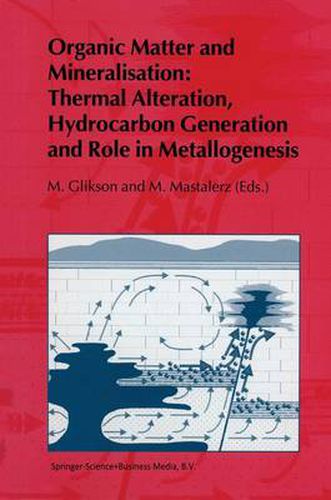Readings Newsletter
Become a Readings Member to make your shopping experience even easier.
Sign in or sign up for free!
You’re not far away from qualifying for FREE standard shipping within Australia
You’ve qualified for FREE standard shipping within Australia
The cart is loading…






This title is printed to order. This book may have been self-published. If so, we cannot guarantee the quality of the content. In the main most books will have gone through the editing process however some may not. We therefore suggest that you be aware of this before ordering this book. If in doubt check either the author or publisher’s details as we are unable to accept any returns unless they are faulty. Please contact us if you have any questions.
This text demonstrates the direct link between petroleum, the derivative of organic materials, and ore bodies. The studies reported here highlight the common factors between hydrocarbons and mineral concentrations, such as heat sources, migration routes and likely traps. It emphasizes the role that hydrothermal processes play in the genesis of both petroleum generation and ore-grade mineralization. The presence of oil residue in the form of bitumen and pyrobitumen in all sediment-hosted ore bodies throughout the geological record is a testimony to their common diagenetic history. Studies of active hydrothermal systems reported in this book describe the processes and derivatives in these environments, linking hydrocarbon generation and mineral precipitation. A comparison with residual oil in many ore bodies and mineralization occurrences in the geological record, as depicted in this book, can be explained in terms of processes in active hydrothermal systems. One of the most interesting and challenging recent discoveries, that of living nano-bacteria, is reported in this book. The nanobes , as they have been dubbed, have been suggested as the link between the living and non-living matter. The resemblance of these nano-organisms to fossil forms observed in a Martian meteorite have been reported recently in the media. Likewise the similarity to nano-bacteria in Archaen sediments is highlighted in two chapters of the book.
$9.00 standard shipping within Australia
FREE standard shipping within Australia for orders over $100.00
Express & International shipping calculated at checkout
This title is printed to order. This book may have been self-published. If so, we cannot guarantee the quality of the content. In the main most books will have gone through the editing process however some may not. We therefore suggest that you be aware of this before ordering this book. If in doubt check either the author or publisher’s details as we are unable to accept any returns unless they are faulty. Please contact us if you have any questions.
This text demonstrates the direct link between petroleum, the derivative of organic materials, and ore bodies. The studies reported here highlight the common factors between hydrocarbons and mineral concentrations, such as heat sources, migration routes and likely traps. It emphasizes the role that hydrothermal processes play in the genesis of both petroleum generation and ore-grade mineralization. The presence of oil residue in the form of bitumen and pyrobitumen in all sediment-hosted ore bodies throughout the geological record is a testimony to their common diagenetic history. Studies of active hydrothermal systems reported in this book describe the processes and derivatives in these environments, linking hydrocarbon generation and mineral precipitation. A comparison with residual oil in many ore bodies and mineralization occurrences in the geological record, as depicted in this book, can be explained in terms of processes in active hydrothermal systems. One of the most interesting and challenging recent discoveries, that of living nano-bacteria, is reported in this book. The nanobes , as they have been dubbed, have been suggested as the link between the living and non-living matter. The resemblance of these nano-organisms to fossil forms observed in a Martian meteorite have been reported recently in the media. Likewise the similarity to nano-bacteria in Archaen sediments is highlighted in two chapters of the book.